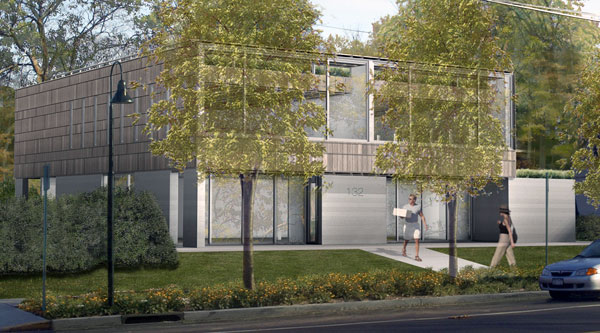
Pulitzer-prize winning author and fellow of the American Institute of Architects Paul Goldberger said the bar was raised this year for AIA Peconic’s 2nd annual Design Awards. Mr. Goldberger was part of a three-member jury for the ceremony held Saturday at the Senior Auditorium at the Ross School in East Hampton.
Joining him were Manhattan-based architects Juergen Riehm and Laurie Hawkinson, both AIA members. AIA Peconic covers the five East End towns of East Hampton, Southampton, Riverhead, Shelter Island, and Southold. Formed in 2005, the Peconic chapter is part of the national organization, which, at 83,000 members, is dedicated to advancing the values of architecture.
The awards recognize achievement in a broad range of architectural projects and are aimed at increasing public awareness for excellence in the field, honoring those in the profession who enrich the built environment, and inspiring those in the architectural community to strive for excellence in design.
Paul Masi, of Bates Masi Architects in Sag Harbor, cleaned up at the event winning five of the eight design awards. Though the categories included architecture, with subcategories for new constructions and renovations and additions, interior architecture and projects, there were no awards for interior designs.
“We had no stylistic bias going into these awards,” Mr. Goldberger said. “We looked only at quality.”
Mr. Goldberger commented that no interior designs were submitted for this year’s awards that measured up to the chapter’s standards.
“The East End is not a typical region and it has a rich heritage and tradition of architecture with the East End landscape being like none other,” he said. Mr. Goldberger added that such factors as sensitivity and context to the particular site of the project, adherence to the site’s regional and cultural character, originality, solving problems posed by the environment, and sustainability were what the jury considered while judging this year’s designs.
Mr. Masi won three Merit Awards, one for architecture/new construction for his design “Roaman House” in Amagansett, another for his “North Main” commercial creation in East Hampton and a third, in
the projects category, for “Silver Hollow,” designed for an upstate New York property.
Additionally, Mr. Masi took home two Honor Awards, one in the renovations and additions category and one in the projects division.
Fred Stelle of Stelle Architects in Bridgehampton collected two Merit Awards for renovations and additions and East Hampton architect Edvin Karl Stromsten received a Merit Award for new construction.
Most prominent this year, Mr. Goldberger noted, was the modesty in the designs. “Some of the applicants simply tried too hard,” Mr. Goldberger said. “You don’t have to re-invent the wheel to do something original.”
Mr. Riehm said he “was very impressed” with this year’s contestants. “They all possessed the qualities architecture should have,” he said.
Ms. Hawkinson highlighted the focus on sustainability in this year’s winning designs and how passive solar and geo-thermal features fit into many of the projects. The “Surfside” design in Bridgehampton, which garnered a Merit Award for Fred Stelle, meshed perfectly, in Ms. Hawkinson’s view, with its oceanside landscape appearing to float above the shore and marsh grass. “This is very simple, yet inspiring,” Ms. Hawkinson said of the design. “It’s not just sustainable, it’s stylish.”
Mr. Masi received praise from Mr. Goldberger for his creativity in his renovation entitled “Re-Cover” in Amagansett.
“He brought this house up to date while respecting its old feel,” Mr. Goldberger said, adding that oftentimes “too much” architecture is used and stands in the way of something simple and creative.
In his design “Northwest Landing” in East Hampton, Mr. Masi solved an environmental problem, that of building in a flood plain, by raising the house on pier-like columns. Ms. Hawkinson noted that the design fit its surroundings and solved the issue of protecting the structure from rising tides. “This is something that could be done in New Orleans,” she said. “This allows the water to go where it wants and you can store kayaks underneath, which is fitting with the area as well. It’s a wonderful composition.”
Mr. Riehm said that all the winning schemes were “relaxed and understated,” while at the same time achieved originality.